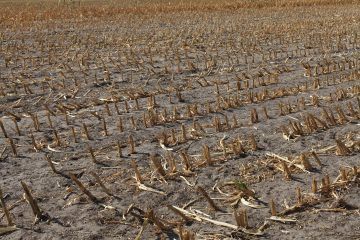Bill McKibben in Rolling Stone:

Oh, it could get very bad.
In 2015, a study in the Journal of Mathematical Biology pointed out that if the world’s oceans kept warming, by 2100 they might become hot enough to “stop oxygen production by phyto-plankton by disrupting the process of photosynthesis.” Given that two-thirds of the Earth’s oxygen comes from phytoplankton, that would “likely result in the mass mortality of animals and humans.”
A year later, above the Arctic Circle, in Siberia, a heat wave thawed a reindeer carcass that had been trapped in the permafrost. The exposed body released anthrax into nearby water and soil, infecting two thousand reindeer grazing nearby, and they in turn infected some humans; a twelve-year-old boy died. As it turns out, permafrost is a “very good preserver of microbes and viruses, because it is cold, there is no oxygen, and it is dark” — scientists have managed to revive an eight-million-year-old bacterium they found beneath the surface of a glacier. Researchers believe there are fragments of the Spanish flu virus, smallpox, and bubonic plague buried in Siberia and Alaska.
Or consider this: as ice sheets melt, they take weight off land, and that can trigger earthquakes — seismic activity is already increasing in Greenland and Alaska. Meanwhile, the added weight of the new seawater starts to bend the Earth’s crust.
More here.
